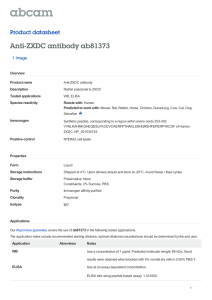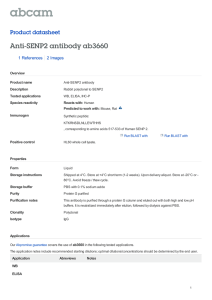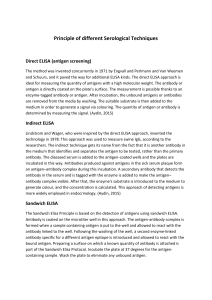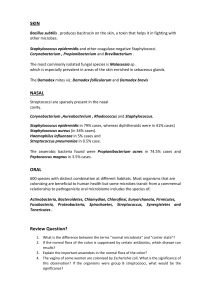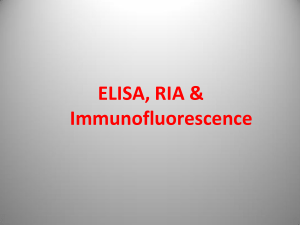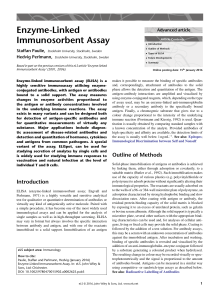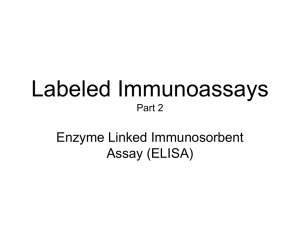Final Lab Exam Study Guide
advertisement
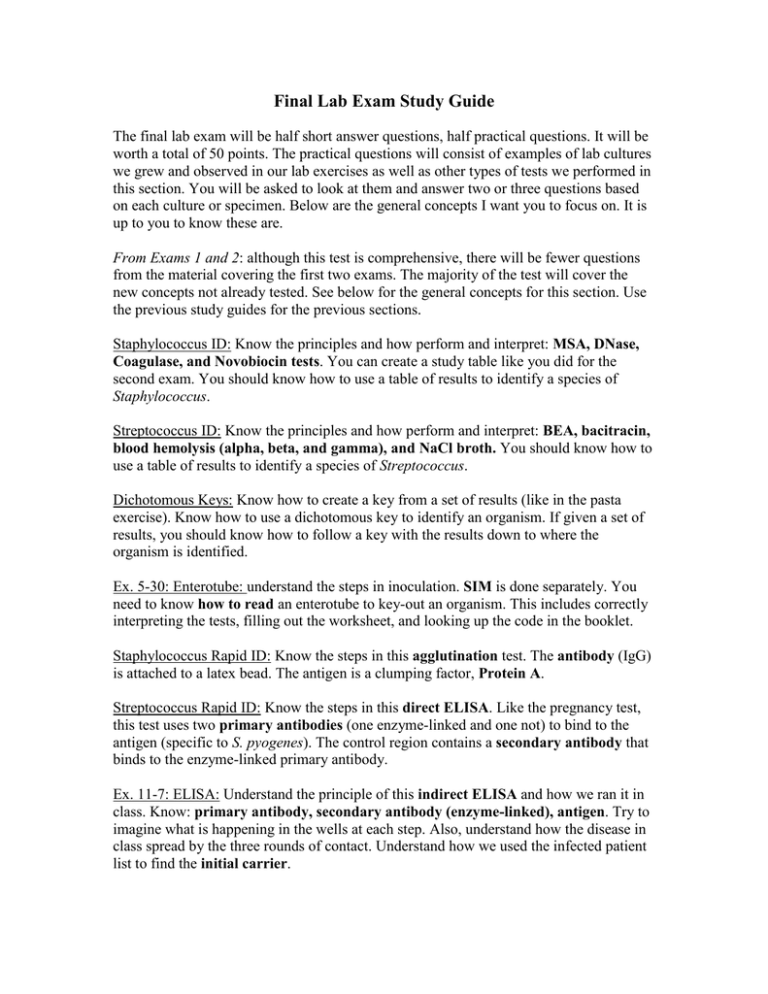
Final Lab Exam Study Guide The final lab exam will be half short answer questions, half practical questions. It will be worth a total of 50 points. The practical questions will consist of examples of lab cultures we grew and observed in our lab exercises as well as other types of tests we performed in this section. You will be asked to look at them and answer two or three questions based on each culture or specimen. Below are the general concepts I want you to focus on. It is up to you to know these are. From Exams 1 and 2: although this test is comprehensive, there will be fewer questions from the material covering the first two exams. The majority of the test will cover the new concepts not already tested. See below for the general concepts for this section. Use the previous study guides for the previous sections. Staphylococcus ID: Know the principles and how perform and interpret: MSA, DNase, Coagulase, and Novobiocin tests. You can create a study table like you did for the second exam. You should know how to use a table of results to identify a species of Staphylococcus. Streptococcus ID: Know the principles and how perform and interpret: BEA, bacitracin, blood hemolysis (alpha, beta, and gamma), and NaCl broth. You should know how to use a table of results to identify a species of Streptococcus. Dichotomous Keys: Know how to create a key from a set of results (like in the pasta exercise). Know how to use a dichotomous key to identify an organism. If given a set of results, you should know how to follow a key with the results down to where the organism is identified. Ex. 5-30: Enterotube: understand the steps in inoculation. SIM is done separately. You need to know how to read an enterotube to key-out an organism. This includes correctly interpreting the tests, filling out the worksheet, and looking up the code in the booklet. Staphylococcus Rapid ID: Know the steps in this agglutination test. The antibody (IgG) is attached to a latex bead. The antigen is a clumping factor, Protein A. Streptococcus Rapid ID: Know the steps in this direct ELISA. Like the pregnancy test, this test uses two primary antibodies (one enzyme-linked and one not) to bind to the antigen (specific to S. pyogenes). The control region contains a secondary antibody that binds to the enzyme-linked primary antibody. Ex. 11-7: ELISA: Understand the principle of this indirect ELISA and how we ran it in class. Know: primary antibody, secondary antibody (enzyme-linked), antigen. Try to imagine what is happening in the wells at each step. Also, understand how the disease in class spread by the three rounds of contact. Understand how we used the infected patient list to find the initial carrier.


